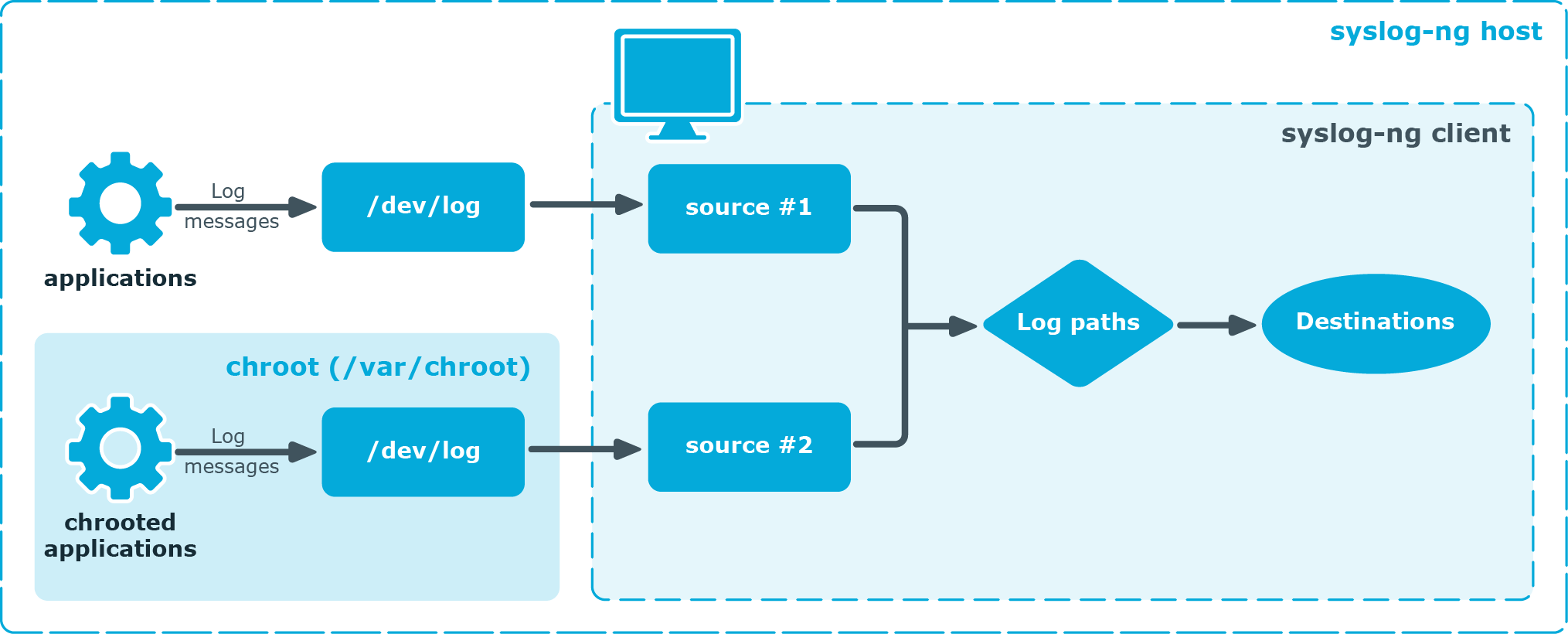Resolving hostnames locally enables you to display hostnames in the log files for frequently used hosts, without having to rely on a DNS server. The known IP address – hostname pairs are stored locally in a file. In the log messages, syslog-ng will replace the IP addresses of known hosts with their hostnames.
To configure local name resolution
-
Add the hostnames and the respective IP addresses to the file used for local name resolution. On Linux and UNIX systems, this is the /etc/hosts file. Consult the documentation of your operating system for details.
-
Instruct syslog-ng to resolve hostnames locally. Set the use-dns() option of syslog-ng to persist_only.
-
Set the dns-cache-hosts() option to point to the file storing the hostnames.
options { use-dns(persist_only); dns-cache-hosts(/etc/hosts); };

